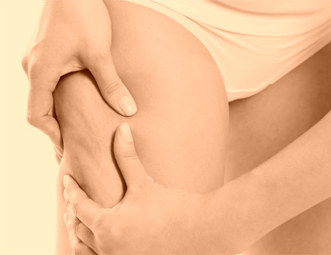Newsletter
You can sign up for our e-mail newsletter to be informed about the developments.


Cellulite, a common problem of 98% of the world’s women, is a general concept that describes the irregular appearance of the skin and fat tissue, with an orange peel appearance and pits on the skin. Cellulite; It can be defined as a regional metabolic disorder of the subcutaneous fat tissue in the thigh, hip and abdomen. However, it should not be confused with overweight or obesity.
It is thought that there are many factors that cause cellulite. Cellulites; It may progress with chronic venous (blood pressure in the veins) insufficiency and varicose veins. In this case, thin and thick capillary cracks are visible on the skin. It is a fact that blood and lymphatic circulation disorders cause cellulite. Therefore, a part of the treatment consists of combating circulatory disorders. Additionally, the role of hormonal factors in the formation of cellulite is indisputable. One of the most important hormones in the onset and progression of cellulite is estrogen. This is why cellulite occurs most frequently in women; it begins after puberty and increases during pregnancy, menstruation, and menopause.
Apart from all these, there are additional factors that facilitate the formation of cellulite. At the forefront of these factors is genetic predisposition. Imbalanced diets high in fats and carbohydrates, excessive salt intake, and a diet low in fiber also contribute to the increase of cellulite. A sedentary lifestyle, tight clothing, and high heels lead to dysfunction in the calf muscles and damage to the reduced muscle pumping mechanism, causing decreased venous circulation and consequently, cellulite. Smoking also reduces microcirculation and tissue oxygenation, and increases the formation of free radicals. Alcohol negatively affects fat metabolism, contributing to the formation of cellulite.
How to Test Cellulite Degree and Type?
To fully address this issue, it is essential to first identify what is causing cellulite in the individual’s body, map the distribution of cellulite, and determine the level of cellulite present.
Grade 1 cellulite: The appearance described as “orange peel” becomes visible when the skin is pinched. This type is more commonly observed in young women.
Grade 2 cellulite: Often seen while standing or with legs crossed, it creates a dimpled appearance on the thighs. When the legs are pinched, the orange peel texture becomes more pronounced with more visible lumps. It is noticeable not only on the thighs but also on the hips and buttocks, with a wave-like appearance. It is commonly found on the thighs, abdomen, hips, and arms.
Grade 3 cellulite: It is noticeable not only when sitting or pinching but also in a horizontal position. It can sometimes cause pain. It is a type frequently observed in women during menopause. It is observed on the thighs, abdomen, arms, hips, and buttocks.
Cellulite is not a destiny. Cellulite can be prevented with proper nutrition, exercise, eliminating habits that cause cellulite, and using supportive treatments.
Ceres Kozmetik ürünleri yalnızca web sitemizde belirtilen yetkili satış noktaları üzerinden satışa sunulmaktadır.Bunun dışında, herhangi bir e-ticaret sitesi, sosyal medya platformu veya üçüncü şahıs web sitesi ile hiçbir ticari bağımız ve iş ortaklığımız bulunmamaktadır.
Başka internet sitelerinde veya platformlarda Ceres markası adıyla sunulan ürünler,marka güvencemiz kapsamında değerlendirilmez. Yetkili Satış Noktalarımızı Görmek İçin Tıklayın